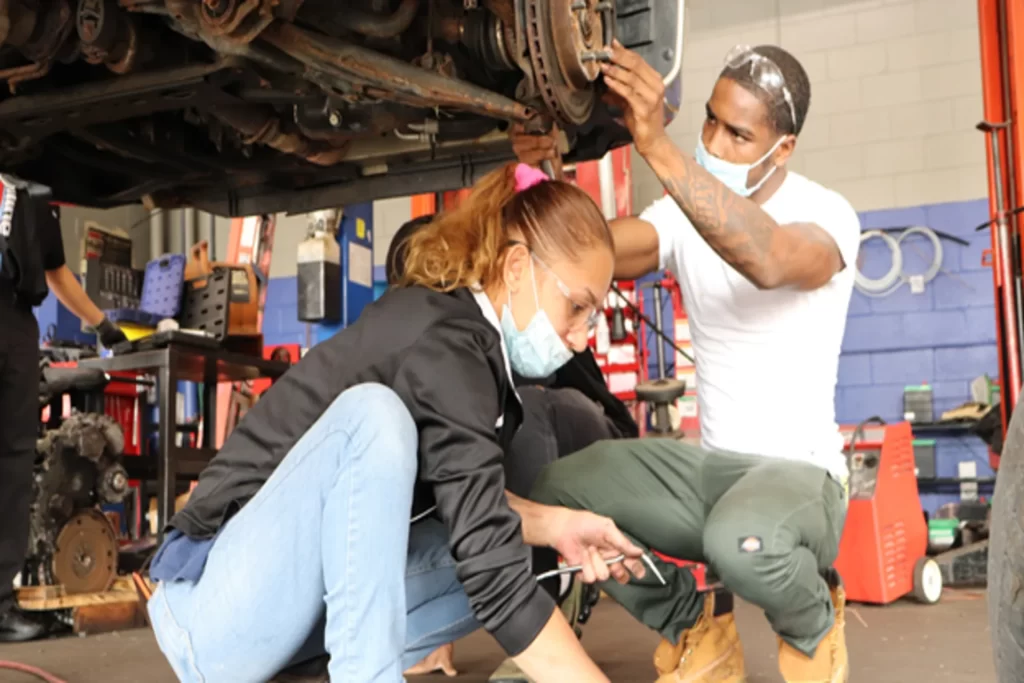Construction and infrastructure maintenance depend heavily on skilled trades professionals to keep the industry running. These experts are experienced and trained in various trades, including carpentry, plumbing, welding, and electrical work. Let’s take a look at a day in the life of a skilled trades worker.
The formation and maintenance of numerous types of infrastructure, such as utilities, structures, bridges, and roads, comprise infrastructure development. Skilled tradespeople are responsible for ensuring that these facilities are built in compliance with regulations, are secure and practical, and are maintained efficiently as infrastructure is created. They are employed in many industries, including transportation, utilities, and construction. Attention to detail, physical agility, problem-solving abilities, and the capacity to work in a team environment are some of the essential requirements for skilled trades jobs.
Depending on the project they are working on, a trade skill masters’ typical day in the infrastructure development industry can change. First, they arrive at the job site early and check in with their manager. Then they will prepare their tools and equipment for the day’s chores. This could entail checking supplies, maintaining equipment, and ensuring everything works.
Workers in the skilled trades that are involved in the infrastructure construction have a variety of duties, such as:
Trade programs apprentices ensure that the infrastructure they are working on is in accordance with construction codes. must be able to read and comprehend complicated plans and schematics.
They might be in charge of setting up and maintaining various pieces of machinery, including pumps, generators, and motors. Trade programs ensure that apprentices learn to maintain machinery.
Using trade skill masters for welding and fabrication helps in improving the quality of infrastructure development. Trade professionals are essential to weld and build metal parts like steel girders or pipes.

Skilled professionals working in the field may install, fix, and maintain electrical systems like motors, lighting, and generators.
Building and installing structural elements, flooring, and roofing systems may fall under the purview of carpenters.
Among the many plumbing systems that plumbers can install, maintain, and fix are our water supply systems and sewage lines.
Maintenance personnel may perform regular inspections and repairs on infrastructure to ensure it is running correctly.
The challenges confronted by skilled craftspeople in the construction of infrastructure are various. Working in poor weather, especially in the winter, is one of the biggest challenges. To meet the project’s demands, trade skills professionals must also be willing to work long hours and have flexible schedules. The physically demanding nature of the job—which forces people to operate in cramped spaces, climb ladders, and lift large objects—presents another difficulty.

Despite the difficulties, competent craftspeople find their work gratifying in infrastructure construction. They take pride in their performance because they understand how important building and maintaining essential infrastructure is. Additionally, they value the opportunity to work outdoors and with their hands, which is a welcome change from a desk job.
In conclusion, trade skills professionals are crucial to the construction and upkeep of the infrastructure that supports our civilization. They are responsible for various duties, from reading designs to setting up and maintaining equipment. Although labor might be physically demanding and challenging, it can also be enjoyable and provide a sense of success because their work is crucial to society. Therefore, pursuing a career in the skilled trades related to infrastructure construction can be both tough and gratifying. Learn more with PTTI’s trade apprenticeship programs.
Read More